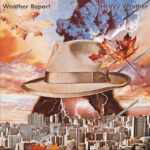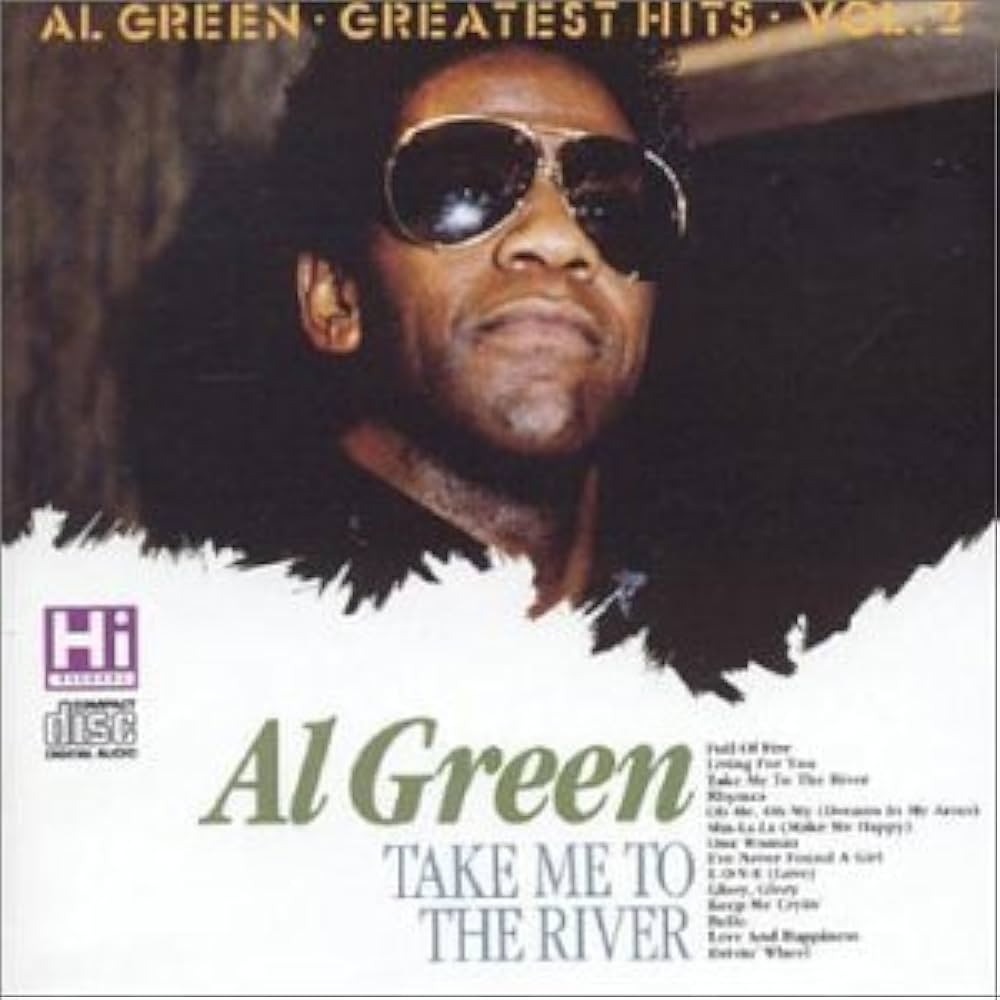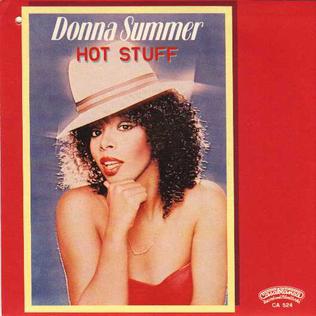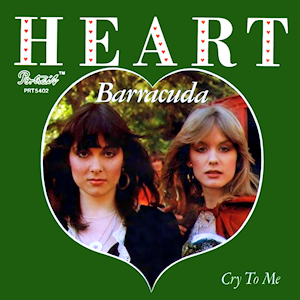 There are moments in music history where sound transcends genre—where it stops belonging to one group of listeners and becomes part of the global collective consciousness. “Birdland” by Weather Report is one of those moments. It’s a song that manages to feel both spontaneous and meticulously constructed, both playful and virtuosic, both intellectual and deeply emotional. Released in 1977 on the band’s landmark album Heavy Weather, “Birdland” stands as one of the greatest achievements in jazz fusion—a track that didn’t just appeal to jazz purists, but to rock fans, funk lovers, and anyone with ears for innovation.
There are moments in music history where sound transcends genre—where it stops belonging to one group of listeners and becomes part of the global collective consciousness. “Birdland” by Weather Report is one of those moments. It’s a song that manages to feel both spontaneous and meticulously constructed, both playful and virtuosic, both intellectual and deeply emotional. Released in 1977 on the band’s landmark album Heavy Weather, “Birdland” stands as one of the greatest achievements in jazz fusion—a track that didn’t just appeal to jazz purists, but to rock fans, funk lovers, and anyone with ears for innovation.
What made “Birdland” so revolutionary was not just its sound but its spirit. It encapsulated the ethos of an entire decade: electric, adventurous, diverse, and fearless. It was jazz reborn through the amplifier, refracted through the bright, chrome optimism of the late 1970s. Its grooves shimmered with funk, its harmonies pulsed with pop accessibility, and its complexity rivaled classical composition. It was an invitation into a new world of music—one where boundaries dissolved, and energy ruled.
The Birth of an Electric Vision
By the time Weather Report released Heavy Weather, they had already established themselves as the premier jazz fusion band in the world. Formed in 1970 by keyboardist Joe Zawinul and saxophonist Wayne Shorter—both veterans of Miles Davis’s groundbreaking Bitches Brew sessions—the group set out to explore new sonic territory. Their mission was clear: take the improvisational heart of jazz and electrify it with the power of rock, the pulse of funk, and the textural experimentation of electronic music.
“Birdland” was the culmination of that vision. Written by Zawinul, the piece was inspired by the famous New York jazz club of the same name, a hub where legends like Charlie Parker, Dizzy Gillespie, and Miles Davis once played. For Zawinul, who had come up during the bebop era, Birdland represented both a personal and cultural landmark—a place where modern jazz was born. But rather than compose a nostalgic tribute, he reimagined that spirit through the lens of the late ’70s.
The result was a track that felt like the sound of flight itself: soaring melodies, pulsing basslines, and shimmering synthesizers that seemed to stretch endlessly into the horizon. It wasn’t a recreation of the past—it was a transformation of it.
The Sound of Fusion Perfected
“Birdland” opens with an unforgettable synth melody, bright and joyous, layered over a steady rhythm that feels like motion itself. Zawinul’s use of the ARP 2600 and Oberheim polyphonic synthesizers was groundbreaking for its time. He crafted tones that were warm yet metallic, creating textures that blended seamlessly with Wayne Shorter’s soprano sax and Jaco Pastorius’s singing fretless bass.
The interplay between the musicians is where the track truly takes flight. Pastorius’s bassline doesn’t just provide rhythm—it sings, dances, and leads. His harmonic slides and percussive pops give the song its elasticity, a rubber-band bounce that keeps every note alive. Shorter, ever the minimalist, threads his melodic lines like aerial contrails across the sonic landscape. Meanwhile, Zawinul’s keyboard work—alternating between rhythmic comping and melodic bursts—acts as both the engine and the wings of the composition.
Drummer Alex Acuña and percussionist Manolo Badrena add the heartbeat, fusing jazz precision with Latin groove. The combination is hypnotic. It’s no wonder DownBeat magazine hailed “Birdland” as a defining statement of jazz fusion—the perfect marriage of improvisation and composition, of acoustic skill and electronic invention.
A Song Without Words That Spoke to Everyone
One of the most remarkable things about “Birdland” is its universality. It’s an instrumental track, yet it communicates more emotion than most songs with lyrics ever could. Listeners didn’t need to understand jazz theory to be moved by it. The melody was instantly memorable, even hummable—a rarity in a genre that often prided itself on complexity over accessibility.
This accessibility was a deliberate choice. Zawinul once said, “I wanted to write a tune that my mother could whistle.” That intention—bridging sophistication with simplicity—became the guiding principle of the song. “Birdland” was high art that felt like pop; cerebral music that invited dancing.
Its impact reached far beyond jazz circles. The song became a radio hit—an almost unthinkable feat for a jazz instrumental in the late 1970s. It topped Billboard’s jazz charts, crossed into pop playlists, and earned Weather Report international acclaim. The track even garnered multiple Grammy nominations, cementing its place as a rare work of art that could satisfy both critics and casual listeners alike.
Jaco Pastorius: The Soul of “Birdland”
No discussion of “Birdland” is complete without Jaco Pastorius. His contribution to the track is nothing short of legendary. Before joining Weather Report, the electric bass was largely viewed as a supporting instrument—relegated to rhythm sections and rarely celebrated for its melodic potential. Jaco changed all that.
His fretless Fender Jazz Bass sang with a voice that was part trumpet, part cello, and entirely unique. On “Birdland,” Jaco turned the bass into a lead instrument, laying down complex runs that were as expressive as any horn or guitar solo. His sense of timing was impeccable, his groove effortless, his tone lyrical.
It’s no exaggeration to say that “Birdland” helped redefine what the bass could be. Musicians across genres—from funk to rock to pop—were inspired by Jaco’s fearless musicianship. His performance on the track became a touchstone for future generations, influencing everyone from Marcus Miller to Flea.
A Tribute Within a Tribute
Beyond its technical brilliance, “Birdland” also carries deep emotional resonance. The song’s title isn’t just a nod to the club where bebop thrived; it’s also a tribute to Charlie “Bird” Parker, the saxophone genius whose spirit defined modern jazz. By naming the song after Parker’s nickname and his iconic venue, Zawinul was drawing a direct line between jazz’s past and its future.
But “Birdland” isn’t sentimental—it’s celebratory. Rather than mourn the bygone era of Parker and Gillespie, it celebrates their legacy by reinventing it. The energy of bebop—its velocity, wit, and daring—lives on in the song’s rapid-fire exchanges and bright harmonic shifts. It’s as if Zawinul, Shorter, and Pastorius were channeling Parker’s restless spirit through amplifiers and synthesizers, reminding the world that jazz’s heart still beat strong.
That duality—honoring the past while breaking from it—is what gives “Birdland” its timeless power. It’s both homage and innovation, tradition and transformation, memory and motion.
Crossing Borders: Covers and Cultural Reach
The cultural reach of “Birdland” is staggering. Beyond its success as an instrumental hit, the song was covered and reinterpreted across genres, each version expanding its legacy. The Manhattan Transfer’s 1979 vocal adaptation—complete with lyrics by Jon Hendricks—became a massive success, earning the group a Grammy Award and bringing the tune to an entirely new audience.
Their version emphasized the narrative element of the original composition, with Hendricks’ lyrics describing the vibrant life of the club that inspired it. It bridged the gap between fusion and vocal jazz, proving that the song’s appeal lay not just in its melody but in its atmosphere—the way it seemed to conjure the energy of a live, late-night jam session.
Other artists, from Maynard Ferguson to Quincy Jones, also paid tribute to “Birdland,” each highlighting different aspects of its brilliance. Jones’s arrangement for his 1989 album Back on the Block earned yet another Grammy, showcasing how the tune continued to evolve across decades and styles.
Even outside the jazz world, “Birdland” influenced countless musicians. Rock artists admired its precision and power; funk players drew inspiration from its grooves; pop producers marveled at its polish. It became the rare jazz composition that everyone, regardless of genre, respected.
The Song That Redefined Jazz Fusion’s Legacy
By the late 1970s, jazz fusion had become a crowded field. Dozens of bands—from Return to Forever to Mahavishnu Orchestra—were blending jazz with rock and funk, often emphasizing technical prowess over melody. What set “Birdland” apart was its balance. It had virtuosity, yes, but also joy, melody, and warmth.
It wasn’t about showing off—it was about communication. Each member of Weather Report played with astonishing skill, but they played for the song, not for themselves. That discipline, that unity, gave “Birdland” its emotional clarity.
The track helped prove that fusion wasn’t just an experiment—it was an art form in its own right. Critics who had once dismissed the genre as a passing fad began to acknowledge its depth and creativity. For many listeners, “Birdland” was the gateway drug into jazz, an accessible entry point that led them to explore the works of Miles Davis, Herbie Hancock, and beyond.
The Energy of a Changing Era
To understand the impact of “Birdland,” one must also understand the time it came from. The late ’70s were a period of musical and cultural transition. Disco was dominating the charts, punk was rising, and rock was splintering into countless subgenres. Amid all that, Weather Report created something that felt futuristic but timeless.
The gleaming synthesizers, funky rhythms, and global percussion reflected the era’s technological optimism and cultural diversity. “Birdland” wasn’t just jazz—it was the sound of a world expanding, connected by satellites and sound waves. It was cosmopolitan, colorful, and electric.
The song’s joyful energy stood in contrast to the cynicism that was creeping into late-’70s pop culture. Where many artists turned inward, Weather Report looked upward. The result was a track that felt like light breaking through clouds—a reminder that innovation could still be joyous.
Lasting Influence and Eternal Flight
More than forty years after its release, “Birdland” remains one of the most beloved pieces in modern jazz. It’s taught in conservatories, performed by marching bands, sampled by producers, and streamed by millions who might not even know what jazz fusion means. Its DNA runs through genres as diverse as funk, R&B, and progressive rock.
What’s most remarkable is how fresh it still sounds. The production holds up beautifully, the melodies remain irresistible, and the musicianship is as breathtaking as ever. It’s one of those rare songs that feels both of its time and beyond it.
For Joe Zawinul and Wayne Shorter, “Birdland” represented the height of their collaboration—a moment when everything clicked. The band would continue to evolve, but Heavy Weather and its signature track became their legacy. It captured the ideal of what fusion could be: not a clash of styles, but a harmonious blend that created something entirely new.
Conclusion: Where the Sky Never Ends
“Birdland” is more than a song—it’s a state of mind. It’s the sound of discovery, the sound of motion, the sound of music unbound by category. It invites you to fly without fear, to move without limits, to dream without gravity.
Through its infectious melody, dazzling musicianship, and joyous energy, “Birdland” bridged generations and genres. It brought jazz out of smoky clubs and into the bright light of popular culture, proving that technical mastery and emotional resonance could coexist.
In the end, that’s what makes “Birdland” eternal. It’s not just a tribute to a place or a time—it’s a celebration of music’s ability to lift us higher, to remind us that even in the heaviest weather, there’s always sky above.
For listeners then and now, “Birdland” remains a promise—a promise that sound, when it’s fearless and free, can take flight forever.


